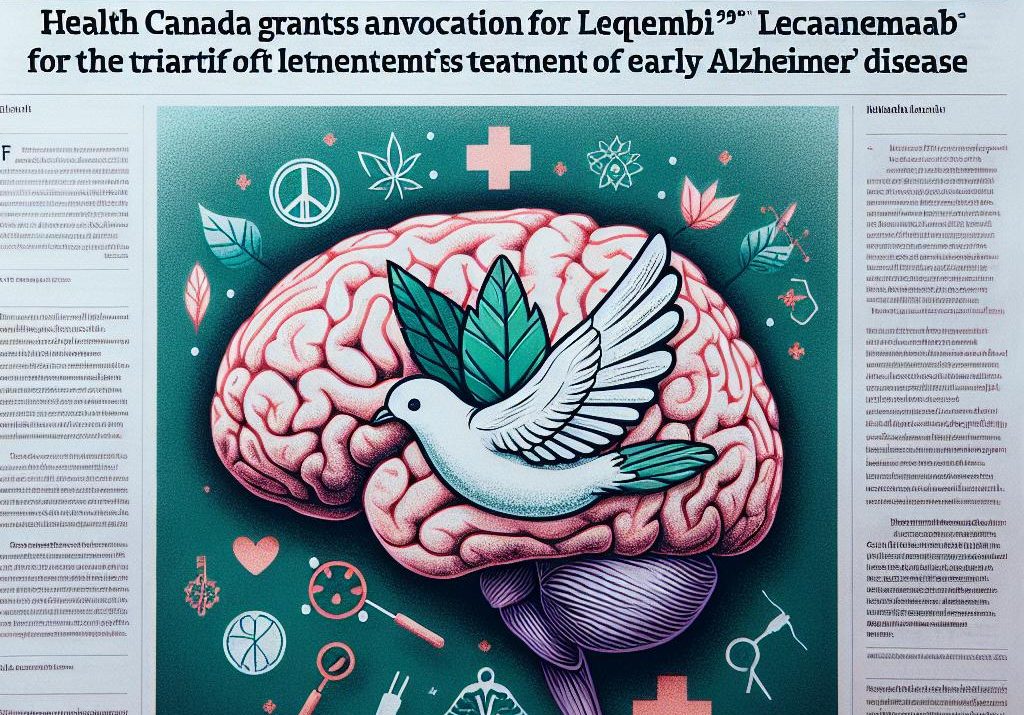Health Canada has granted a Notice of Compliance with Conditions for Leqembi (lecanemab) for adults with mild cognitive impairment or mild dementia due to Alzheimer’s disease who are APOE ε4 non-carriers or heterozygotes and have confirmed amyloid pathology. It is the first disease-modifying Alzheimer’s therapy authorized in Canada, with the decision grounded in the phase 3 Clarity AD trial, which demonstrated statistically significant slowing of clinical and functional decline. Under the conditional pathway, Eisai will provide additional clinical assessment data captured in real-world practice as part of the post-authorization evidence plan.
The genotype-restricted label is the strategic fulcrum of this launch. By explicitly excluding APOE ε4 homozygotes—who face higher ARIA risk—the authorization hardwires precision safety into reimbursement and care pathways. The central question for Commercial and Medical Affairs leaders is whether a genetically and biomarker-defined launch can be operationalized at scale across Canada’s fragmented diagnostic and infusion infrastructure quickly enough to convert conditional authorization into funded, equitable access.
Timing matters. Canada’s dementia population exceeds 771,000 today and is projected to reach approximately 1 million by 2030, with caregiver burden already equivalent to 290,000 full-time jobs and forecast to more than double by mid-century. For patients and families, earlier intervention hinges on reliable access to amyloid confirmation and APOE testing. For HCPs, the care model shifts from symptomatic management to protocolized, risk-managed treatment requiring baseline MRI and ongoing ARIA monitoring, as well as clinical capacity to identify and triage appropriate candidates. Health systems will need to orchestrate PET or CSF access, and increasingly, blood-based biomarker adoption as they mature, alongside infusion scheduling and adverse event management pathways.
For payers, the conditional authorization signals a high-stakes value assessment. Expect tight eligibility aligned to the label, center-of-excellence requirements, and registry-based utilization tracking. CADTH and INESSS appraisals will likely scrutinize the magnitude of clinical effect, safety management costs, and downstream impacts on institutionalization and caregiver productivity. Price negotiation may move beyond CDR-SB differentials toward total cost-of-care frameworks that capture societal value. Private insurers may respond faster than provincial plans, creating near-term access asymmetry that brand teams will need to navigate with tailored pull-through and patient support programs.
Competitively, Leqembi establishes first-mover advantage in Canada and sets the evidence bar for the class. The global evolution toward maintenance dosing every four weeks and subcutaneous formulations could be decisive if and when these options are authorized locally, easing pressure on infusion capacity. Yet genotype stratification and MRI surveillance still anchor resource needs, keeping operational excellence central to differentiation. Real-world data will be the currency of sustained access: registries that track adherence, ARIA management outcomes, functional status, and health resource utilization can strengthen the reimbursement case and shape label evolution.
This decision also crystallizes broader industry currents: the normalization of biomarker-driven neurology, conditional approvals tethered to RWE, and the convergence of therapeutics, diagnostics, and delivery networks. It invites new financing and partnership models, from imaging and lab alliances to outcomes-based agreements that share risk around measurable functional endpoints.
The next 12 to 24 months will determine whether Canada can stand up a scalable early Alzheimer’s pathway that translates authorization into outcomes. Watch for provincial listing decisions, reimbursement for APOE and amyloid testing, the emergence of designated treatment centers and national registries, and signals on Canadian review of subcutaneous and maintenance options. The defining competitive question is shifting from who has the drug to who can deliver the right patient, at the right time, with the right safeguards—and prove it in real-world data.
Jon Napitupulu is Director of Media Relations at The Clinical Trial Vanguard. Jon, a computer data scientist, focuses on the latest clinical trial industry news and trends.







